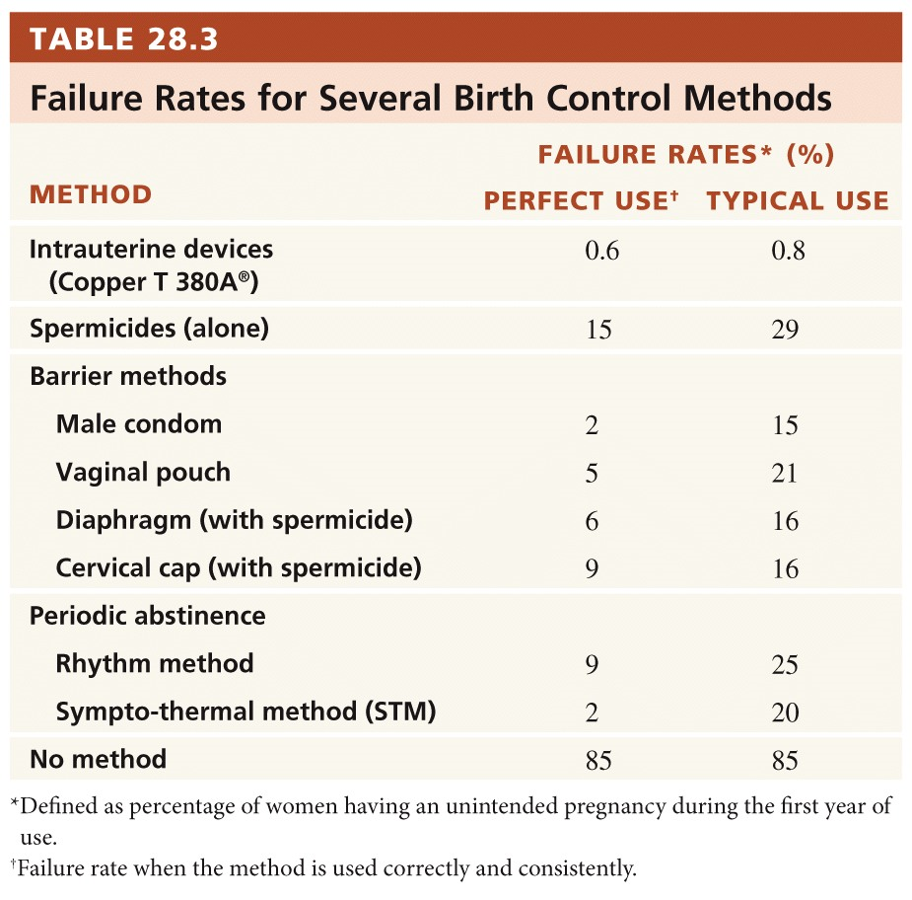 |
| Previous Image | Next Image |
| Description: Periodic abstinence is employed when the couple has knowledge of the physiological changes that take place during the female cycle. The first method used was the rhythm method. The couple abstains from intercourse when ovulation is likely to occur. The sympto-thermal method may be used to avoid or achieve pregnancy. It uses normally fluctuating physiological markers such as temperature and the production of clear, sticky cervical mucous that is produced at ovulation. Abortion is the premature expulsion of the products of conception from the uterus. There are several methods employed. Mifepristone (RU 486) is a hormone used in pregnancies 9 weeks or less. It blocks progestin thus blocking the action of progesterone. Menstruation occurs. Vacuum aspiration (suction) uses suction to remove the embryo or fetus, placenta and uterine lining. Dilation and evacuation are used together to dilate the cervix and employ suction and a forceps to remove the fetus, placenta and uterine lining. Late-stage abortion employs similar methods to dilation and evacuation or uses a saline solution or surgical methods to induce abortion. The reproductive systems develop from several structures and require several chemical substances. Gonads develop from intermediate mesoderm that gives rise to gonadal ridges. Mesonephric (Wolffian) ducts develop into the male reproductive system. Paramesonephric (Mullerian) ducts develop into the female reproductive system. Surgical sterilization: surgical intervention to render an individual incapable of reproduction. Vasectomy is used in males by removing a portion of the vas deferens. Tubal ligation is used in females to tie closed and then cut the uterine (fallopian) tubes. Non-incisional sterilization employs the insertion of a coil made of plastic and metal into each uterine tube. Scar tissue grows and blocks the tubes. Hormonal methods include oral contraceptives that are designed to prevent pregnancy by inhibiting ovulation. There are several types of oral hormonal methods of contraception. Combined oral contraceptives (COC) contain progestin and estrogens. Extended cycle birth control pills contain progestin and estrogen. Menstruation occurs every 13 weeks. Minipills contain progestin only. Progestin thickens cervical mucous. Non-oral methods include: Contraceptive skin patch Vaginal contraceptive ring Emergency contraception (EC) (oral method, but only 2 pills are taken—one within 72 hours of unprotected intercourse; the x = second is taken 12 hours after the first). Barrier methods employ a physical barrier to block sperm from gaining access to the uterine cavity and tubes. These include: Male condom Vaginal pouch (female condom) Diaphragm Cervical cap Picture Stats: Views: 323 Filesize: 548.25kB Height: 900 Width: 912 Source: https://biology-forums.com/index.php?action=gallery;sa=view;id=40593 |
